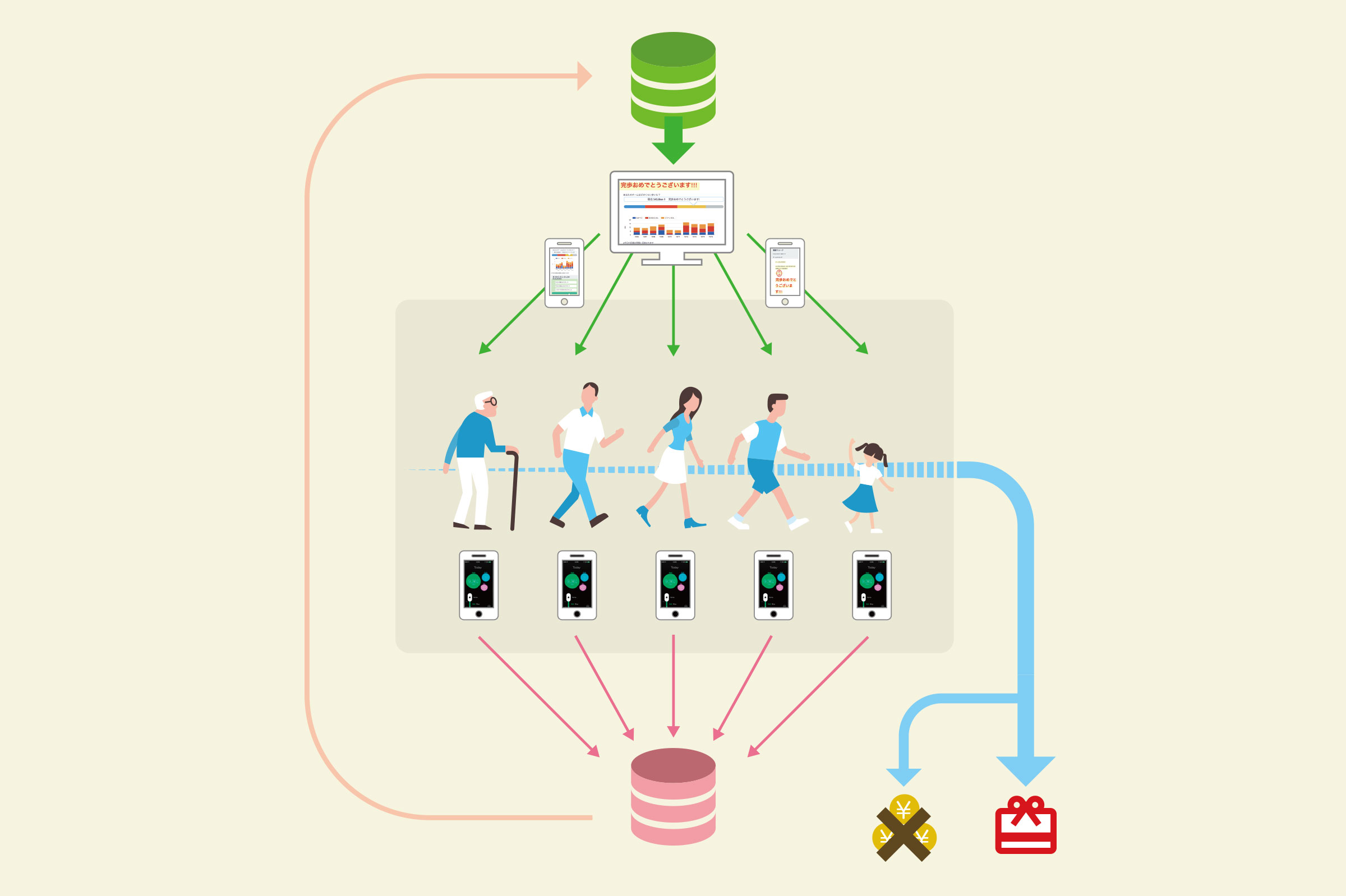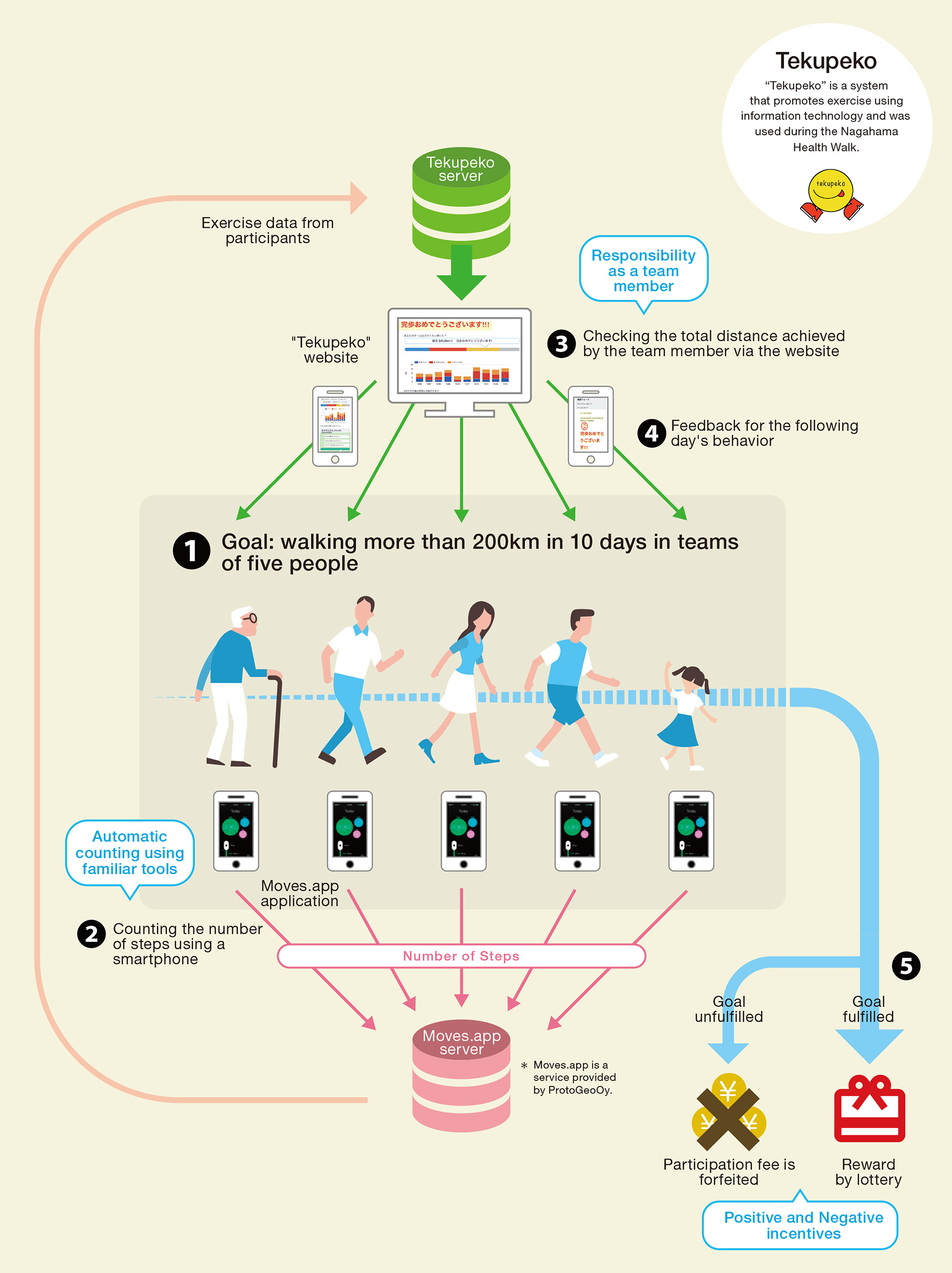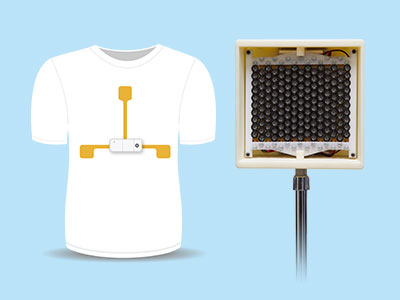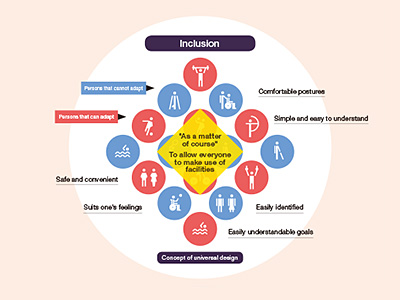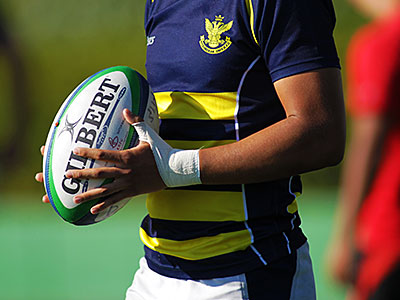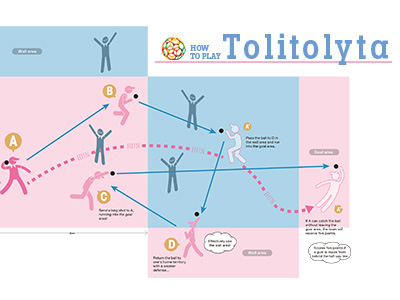STORY #4
Information technology
that changes feelings
and behavior
Haruo Noma
Professor, College of Information Science and Engineering
The secret to motivating sedentary people to keep exercising
An event called the "Nagahama Health Walk" was held in Nagahama City, Shiga Prefecture for three months from September to November 2015. This was the second installment of the event since it began in 2014. The objective was to provide an opportunity for local residents to exercise. Participants formed teams of three or five people and took on the challenge of walking a total of 200km or 120km for 10 days. This meant that each participant would walk longer than 4 km per day.
Haruo Noma, the mastermind of the event, has conducted a substantial amount of empirical research aimed at "embedding exercise in lifestyle and culture." In response to a request from the City of Nagahama, he worked together with Kyoto University and Kindai University to develop a social service system aimed at promoting healthiness called "Tekupeko." This system is available only in Japanese language.
“Tekupeko” is a mechanism that promotes exercise using information technology and was used during the Nagahama Health Walk.
Noma says he represents the feelings of many people when he says, "Everyone seems to know that unless you establish exercise habits early on, it will be too late when you get old or when your health starts to deteriorate. And if you become ill, not only will you suffer, you will also need to spend extra time and money on remedies. However, even if you realize this in theory, it is not that easy to start doing something good for your health 10 or 20 years down the line. For people that do not like exercise, it is even harder." His research pursues the question of, "What should be done to change the feelings or behavior of these people?"
As Noma explains, "Our target is to develop technology and mechanisms to solve social and lifestyle issues using information technology as a tool." His interest consistently turns to "Passing on the benefits of information technology to society."
For example, one of his achievements in promoting behavior modification using information technology is the development of "Tekupiko." This is a system that induces physical movement at shopping malls using a treasure hunt game. Beacons that transmit a Bluetooth signal are installed at various locations in a mall, and shoppers receive the transmissions on their smartphones. This system enables customers to browse shops while also engaging in a treasure hunt on their smartphone. As a result, the shoppers have a more enjoyable shopping experience.
At Noma's laboratory, people's behavior is analyzed based on the movement data of shoppers collected at actual shopping malls. Based on this, Noma thinks about what types of information could be transmitted to provide more shopping enjoyment and induce more customer purchases in multi-generational groups.
The target city for this survey is Nagahama. As a typical city in the countryside, it has a high automobile usage rate. Many residents use their cars to travel only very short distances. According to a city survey, only about half of the population walk or use a bicycle even for short distances that are only 10 minutes on foot. This lack of exercise due to that kind of a lifestyle is an issue for the municipality, as it increases the risk of medical problems in the future.
How can we get people who habitually travel by car to walk? Noma had the idea of making exercise a game, and to naturally let people develop the habit of exercising while enjoying the game. "One of the ways to modify behavior is to give a 'reward' when a goal is achieved," Noma says. For this reason, he planned the Nagahama Health Walk as a game to encourage behavior modification and decided to give both positive and negative incentives. A reward is given if a goal is fulfilled and the participation fee is forfeited if it is not.
To promote behavior modification to an even greater extent, Noma and his team employed ideas like "visualization" and "making friends." They then developed a smartphone application called "Tekupeko." With this, an automatic measuring device measures body weight and energy consumption over the course of a day. The results are accessible from a smartphone at any time. Noma says, "The key point here is the 'automatic' counting and confirmation using a familiar tool, like a smartphone." Thus, this application aims to encourage physical activity by minimizing effort on the part of the user.
An additionally unique feature was the formation of teams of three or five participants in order to achieve a specific goal. "Even a person who tends to think of excuses to give up will feel ashamed about giving up once they feel some responsibility to their team. We incorporated this key human psychological aspect."
Consequently, the total number of participants in the Nagahama Health Walk exceeded 1,000 people. And more than 90% fulfilled the target distance, making the event a great success.
Noma's next task was to analyze the data collected from the event and derive a behavioral model for the question of, "In what situations will people walk?" He says, "Our goal is to make people who tend to not exercise, including myself, adhere to exercise. If we can find the optimal variables, we can develop an approach suitable for these people."
Going forward, mechanisms to adhere to exercise not only for 10 days, but also for longer periods like one month, six months, and one year, will become necessary. Noma will use computing technology to build and widely disseminate an optimal model to ensure that people continue walking.
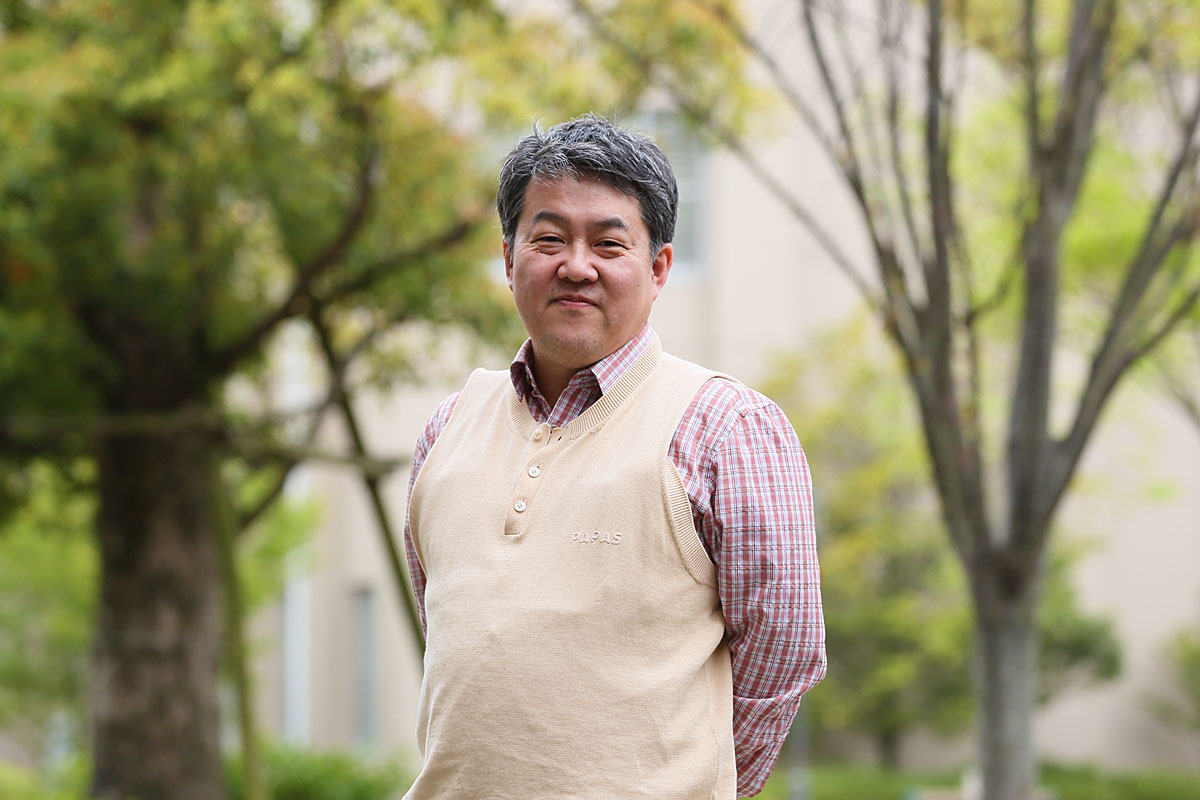
Haruo Noma
Professor, College of Information Science and Engineering
Subject of Research: Research into daily life improvements via media applications, development of MEMS-based micro-scale tactile sensors actualizing human-like dexterous tactile sensations
Research Keywords: Human Interface and Interaction, Intelligent Robotics, Life/Health/Medical informatics, Rehabilitation science/Welfare engineering
